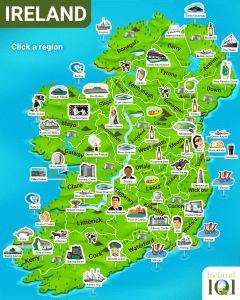Irish Art
Irish Art
The first recorded evidence of Irish artwork dates back to 3200 B.C. At Newgrange prehistoric monument in county Meath, visitors can view rock art which is older than Stonehenge or the Egyptian pyramids. Excavation at this important site revealed mammoth boulders decorated with chiseled carvings which are clearly defined, even today.
During the Bronze Age beginning 1900 BC, the Irish produced much ornamental gold work. Irish artists were also known for religious carvings, and medieval illuminated manuscripts. One of the most well known illuminations is the Book of Kells. This masterpiece of period art was created by a group of monks and dates to 800 B.C. Other well known antiquities are the Ardagh Chalice an ornate copper cup, and the Tara Brooch a spectacular piece of Celtic jewelry.
Later in this period Scandinavian influences took hold due to the Viking Invasions, and with the Norman invasion of the twelfth century Celtic styles were largely overshadowed. Due to ongoing wars, occupation and poverty, the Irish arts mostly consisted of music and literature.
Happily, the creative flame is difficult to extinguish, and in the late 17th century, Irish artists began to reemerge. Due to the lack of available funds these painters, sculptures etc. typically looked outside of Ireland for, training and for clients who were wealthy enough to purchase art.
The 19th and 20th centuries, brought such figures as John Butler Yeats, a painter renowned for his portraits of Irish men and women, and William Orpen, named the official painter of the First World War. His large paintings of political milestones - the Versailles Peace Conference, etc. captured the essence of major political events of the times.
Jack Yeats was the son of John and brother of author, W.B. Yeats. Jack’s favorite subjects included the Irish landscape, horses, circus and travelling players. He also experimented with a variety of painting styles. The second half of the 19th century saw resurgence in Irish nationalism. Renewed interest in the Irish language and Celtic history prompted a revival in the Irish visual arts as well. Changing from a strong British influence, Irish artwork began to capture the ruggedness of an Irish Celtic past as well as its own interpretation of European art.
Today, Ireland has grown into a national power with a vivid and energetic arts community. Its painters, sculptors, playwrights and photographers make a substantial contribution to the world of art.
- by Geanie Roake for Ireland101.com

_(2).jpg)
